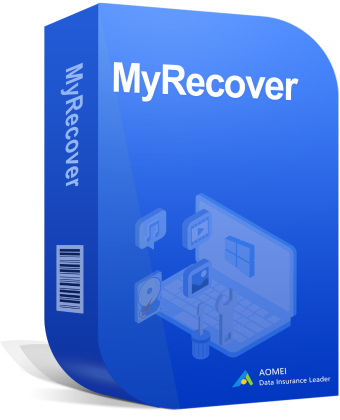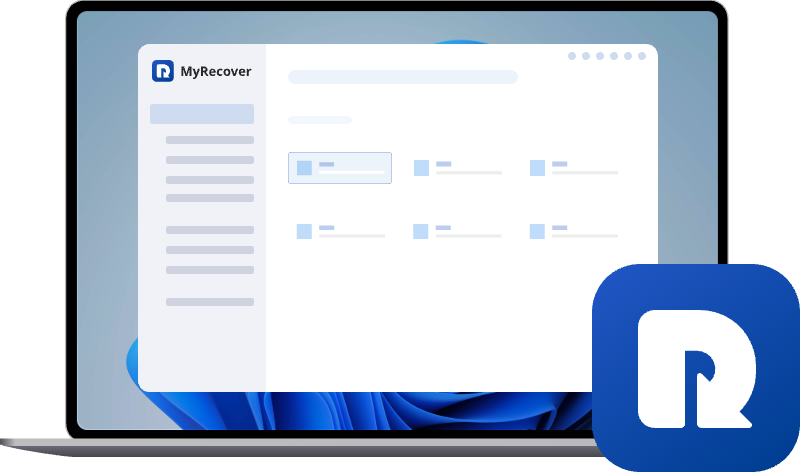Fix RAW SD Card Without Formatting? Here’s How!
A RAW SD card can prevent you from accessing important files, but formatting isn’t your only option. In this step-by-step guide, you’ll discover how to repair RAW SD cards without formatting, recover data using reliable recovery software, and safely restore your SD card for future use.
User Case
I tried to transfer files from my SD card to my internal drive, but I canceled the transfer right as it started. After that, the SD card became unreadable. When I plug it into my Windows computer, it takes several minutes to appear, but no partitions are visible. Disk Management also fails to load while the card is connected, and Windows prompts me that the drive needs to be formatted. I’m unsure how to safely repair the RAW sd card without formatting or losing my data. Anyone can help?
Why Does an SD Card Become RAW?
When an SD card shows up as RAW, it means that the file system is corrupted or unreadable by Windows. This prevents access to the stored data and often triggers a prompt to format the card. Common causes include:
❌Interrupted file transfers: Canceling a file transfer in the middle of the process can corrupt the SD card’s file system. This interruption may leave files partially written or the file allocation table inconsistent, making the entire card unreadable by Windows.
❌Bad sectors: Physical damage or worn-out storage areas on the SD card can prevent Windows from reading certain parts of the card. Over time, repeated use or mishandling can create bad sectors, which may cause the system to mark the drive as RAW.
❌Virus or malware attacks: Malicious software can target the file system, corrupt important system files, or even delete partition information. An infected SD card may suddenly appear as RAW, preventing access to all data stored on it.
❌Partition errors: Accidental deletion, modification, or corruption of the partition table can make Windows unable to recognize the SD card’s structure. Without a valid partition table, the operating system sees the card as RAW, even if the data is still physically present.
❌Sudden power failure: Removing the SD card improperly or experiencing a power outage during write operations can interrupt data writing and damage the file system. This often results in the SD card becoming RAW, with all files temporarily inaccessible.
❌Unsupported file system: If the SD card was formatted on another device with an unsupported file system (like Ext, used in Linux), Windows may not recognize it. The operating system will treat the card as RAW until it is reformatted or properly converted.
❌Outdated drivers: Drivers act as a bridge between the operating system and external storage devices. If the driver for the SD card reader is outdated or corrupt, Windows may fail to recognize the card correctly, sometimes showing it as RAW even if the card itself is intact.
How to Repair RAW SD Card without Formatting?
When your SD card becomes RAW, you may see the error message: "You need to format the disk in drive X before you can use it." Although formatting can make the SD card usable and accessible again, doing so will erase all your data. So, many users are looking for methods to fix RAW SD card without formatting. Next, we will share several safe methods to repair the SD card and recover your files before attempting any formatting.
Method 1. Fix File System Errors
One common cause of a RAW SD card is file system corruption. You can attempt to repair RAW SD card without formatting using CHKDSK CMD tool in Windows:
1. Open Command Prompt as Administrator
Press "Win + S", type "cmd", right-click "Command Prompt", and select "Run as administrator".
2. Run CHKDSK Command
In the Command Prompt, type the following command and press "Enter":
chkdsk g: /f /r (Replace g: with the drive letter of your RAW SD card)
3. Wait for the Scan to Complete
CHKDSK will scan the card for errors and attempt to repair them automatically.
This may take several minutes, depending on the size of the card and the severity of errors. If you don’t want to run the command manually, you can make it work through Windows File Explorer: Open File Explorer and locate the drive you want to check. Right-click the drive and select "Properties". Navigate to the "Tools tab" and click "Check" under the "Error checking" section.
Once the process finishes, safely eject and reconnect the SD card. If successful, the card should now be accessible with its original file system restored.
Method 2. Scan and Remove Virus
Viruses or malware can corrupt the file system of an SD card, causing it to appear as RAW. You can use Windows Defender, the built-in antivirus in Windows, to scan and remove any threats:
1. Open Windows Security
Press "Win + S", type "Windows Security", and select it from the search results.
2. Go to Virus & Threat Protection
In Windows Security, click "Virus & threat protection".
3. Run a Full Scan
Click Scan options, select "Full scan", and then click "Scan now". This will check all files on your SD card and your computer for viruses and malware.If Windows Defender finds malware, follow the prompts to quarantine or remove the infected files.
4. Reconnect the SD Card
After the scan and cleanup, safely eject and reconnect your SD card.Check if the card is now accessible. If it is still RAW, proceed to the next method.
Method 3. Update or Reinstall Driver
Sometimes a RAW SD card appears because Windows cannot properly communicate with the card due to an outdated or corrupted driver. Updating or reinstalling the driver may resolve the issue.
1. Open Device Manager
Press "Win + X"and select "Device Manager" from the menu.
2. Locate Your SD Cardand Update the Driver
Expand Disk drives and find your SD card in the list of connected drives. Right-click the SD card and select "Update driver".
Choose "Search automatically for drivers".Windows will search for the latest driver and install it if available.
If updating does not work, you can reinstall the driver instead: Right-click the SD card and select "Uninstall device". Confirm the uninstallation, then disconnect and reconnect the SD card. Windows will automatically reinstall the driver.
After updating or reinstalling the driver, safely eject and reconnect the SD card.Verify if the card is now accessible and no longer shows as RAW.
Method 4. Re-assign a Different Drive Letter
Sometimes Windows cannot properly access a RAW SD card because of a drive letter conflict. Assigning a new drive letter can restoreand fix RAW SD card without formatting.
1. Open Disk Management
Press "Win + X" and select "Disk Management" from the menu.
2. Change the Drive Letter of Your SD Card
In the list of drives, find your RAW SD card. It may appear without a drive letter or with an unusual one. Right-click the SD card partition and select "Change Drive Letter and Paths…"
Click "Change", then choose a new letter from the dropdown menu. Click "OK" to confirm.
3. Reconnect and Check the SD Card
Safely eject and reconnect the SD card.Check if the card is now accessible in File Explorer.
Last Resort: Recover Files From RAW SD Card and Format It
If none of the previous methods work and your SD card is still RAW, formatting may be the only way to make it usable again. Before formatting, it is crucial to recover all important files to avoid permanent data loss.
Step 1. Recover Files from RAW SD Card
To recover files from inaccessible drive, the most convenient and efficient way is to apply a professional data recovery tool like MyRecover. It can recover data from deletion, formatted disk, emptied Recycle Bin, system crashes and more.

- 500+ Devices Supported | SSD, HDD, USB Flash Drive, SD Sard, etc.
- 1000+ File Formats Supported | PNG, MP4, MP3, TXT, ZIP, MSG, etc.
- 500+ Data Loss Scenarios | Deletion, Format, System Crash, Virus Attack, etc.
1. Install and launch MyRecover.
2. Select the RAW SD card and click "Scan".
3. Preview and select the files you want to recover, then click "Recover".
4. Save the recovered files to a different drive, not the RAW SD card.
If the RAW SD card is not showing up in the MyRecover interface, you can switch to "Partition Lost Recovery" in the "Advanced Recovery" section, which can search all lost partitions on your computer no matter it is deleted or corrupted and scan inside files.
Step 2. Format the RAW SD Card
Once your files are recovered and safely backed up, you can format the SD card to restore its file system. Just follow the prompts in Windows File Explorer to finish the formatting process, or format it through Disk Management:
1. Open Disk Management
Press "Win + X" and select "Disk Management".
2. Format the RAW SD Card
Right-click the RAW partition and select "Format".
3. Choose File System and Options
Select a file system, tick "Perform a quick format", then click "Next".
After formatting, the SD card should now be accessible with a healthy file system.
Summary
When your SD card becomes RAW, it may feel alarming, especially if important files are stored inside. However, you should avoid formatting right away, as it will erase all data. Instead, to fix RAW SD card without formatting, try some safer methods firstlike checking SD card connection, scanning virus, checking file system errors, etc.
If none of these solutions work, your last resort is to recover files first using MyRecover (specialized in recovering data from accidental deletion, formatting, corrupted files system, interrupted file transfer, virus attack, system crash, unbootable pc, and more) and then format the SD card to restore its functionality.


